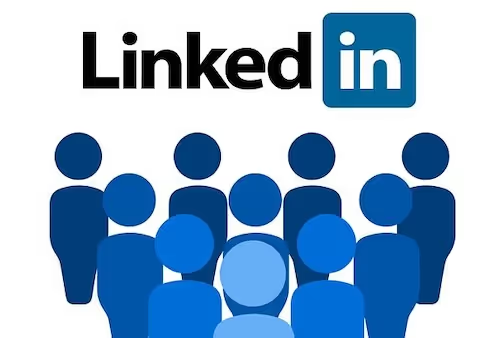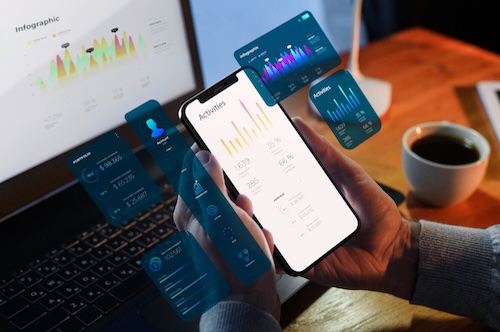LinkedIn has become the backbone of B2B marketing, talent acquisition, and professional networking. With more than 1 billion members worldwide (LinkedIn Official Data), it’s a platform where relationships translate directly into business opportunities. To maximize outreach and engagement, marketers often rely on LinkedIn automation tools.
But there’s a catch. Not all automation practices are safe or compliant. Marketers who misuse LinkedIn scraper tools or rely on unofficial APIs risk account bans, compliance violations, and reputational damage. That’s why understanding LinkedIn API integration and safe automation strategies is critical.
In this blog, we’ll explore how LinkedIn automation works, the risks of scrapers, how brands can use APIs responsibly, and how solutions like Phyllo’s Social Media Intelligence and Influencer Vetting for Brand Safety enable safe, scalable automation.
Why Marketers Use LinkedIn Automation Tools
Marketers increasingly turn to automation to scale their LinkedIn outreach. Manual prospecting, content posting, and analytics tracking are simply too time-consuming in a competitive B2B landscape.
Common Goals for LinkedIn Automation
- Lead Generation – Automating connection requests and follow-ups with potential leads.
- Content Distribution – Scheduling and publishing posts at optimal times.
- Data Gathering – Collecting insights on competitors, industry trends, and audience demographics.
- Influencer Campaigns – Identifying and vetting LinkedIn creators or thought leaders.
Automation helps scale these tasks while maintaining consistency across campaigns.
The Problem with LinkedIn Scraper Tools
While automation is powerful, many marketers turn to LinkedIn scraper tools to extract user data. This practice is risky and often violates LinkedIn’s terms of service.
Why Scraping is Risky
- Data Privacy Violations – Scraping collects personal information without consent.
- Account Suspension – LinkedIn actively bans accounts using scrapers.
- Inaccurate Data – Scraper tools often provide incomplete or outdated results.
- Legal Concerns – Many regions regulate data scraping under privacy laws like GDPR.
According to Statista, 81% of internet users worry about how companies use their personal data (Statista Report). Using unauthorized tools can harm brand trust and customer relationships.
What is LinkedIn API Integration?
Instead of using scrapers, brands can rely on LinkedIn API integration. The LinkedIn API provides secure, structured access to certain data in compliance with platform policies.
Key Benefits of API Integration
- Safety – APIs operate within LinkedIn’s approved guidelines.
- Accuracy – Data is sourced directly from the platform, ensuring reliability.
- Scalability – Enables integration into CRMs, analytics, and automation systems.
- Compliance – Prevents legal and reputational risks tied to scraping.
APIs are the backbone of safe automation and allow brands to integrate LinkedIn data into wider marketing systems.
Types of LinkedIn Automation Tools
Not all automation tools are built the same. Some are risky scrapers, while others use APIs responsibly.
Categories of LinkedIn Automation
- Outreach Automation Tools
- Automate sending invitations, InMails, and follow-ups.
- Useful for sales prospecting and B2B lead generation.
- Content Scheduling Tools
- Manage post scheduling, performance tracking, and engagement monitoring.
- Ensure consistent brand visibility.
- Analytics & Intelligence Tools
- Extract audience insights, competitor benchmarks, and engagement patterns.
- Best when powered by Social Media Intelligence platforms.
- Influencer Vetting Tools
- Check authenticity and reputation of thought leaders before partnerships.
- Solutions like Influencer Vetting for Brand Safety ensure campaigns remain risk-free.
Safe LinkedIn API Integration vs LinkedIn Scrapers
To highlight the difference, here’s a direct comparison between LinkedIn scrapers and LinkedIn API integration:
Clearly, API-driven automation is the safe, future-ready choice for marketers.
The Role of Influencer Background Checks on LinkedIn
LinkedIn is home to millions of professionals and thought leaders. But not every influencer aligns with a brand’s values. This makes influencer background checks essential.
Why Background Checks Matter
- Protect Brand Safety – Avoid partnering with individuals with controversial posts.
- Detect Fake Influence – Identify inflated follower counts or engagement pods.
- Ensure Industry Relevance – Partner only with credible voices in your sector.
Phyllo’s Influencer Vetting for Brand Safety provides automated background checks, helping brands collaborate with LinkedIn creators who are authentic and safe.
Using Social Media Intelligence for LinkedIn Automation
Data from APIs becomes valuable when turned into insights. This is where Phyllo’s Social Media Intelligence comes in.
Benefits of Social Media Intelligence for LinkedIn
- Benchmark influencer performance in B2B campaigns.
- Monitor audience demographics and sentiment.
- Spot trends in professional conversations.
- Optimize campaigns with real-time insights.
Marketers can use this intelligence layer to fine-tune automation workflows for maximum ROI.
Social Screening for Safer LinkedIn Campaigns
Professional reputation is everything on LinkedIn. Phyllo’s Social Screening allows brands to scan historical LinkedIn activity of potential partners, employees, or influencers.
How Social Screening Helps
- Flags controversial posts, political statements, or sensitive content.
- Ensures compliance with industry-specific regulations.
- Protects brand reputation during collaborations.
This screening process is crucial in industries like finance, healthcare, and education, where professional standards are tightly regulated.
Role of Social Listening in LinkedIn Automation
LinkedIn is not just a database of professionals—it’s a conversation hub. Phyllo’s Social Listening API allows brands to monitor these conversations at scale.
Why Social Listening Matters
- Identify trending topics among professionals.
- Measure brand sentiment within B2B communities.
- Benchmark against competitor campaigns.
- Discover new partnership or sponsorship opportunities.
For example, if sustainability trends spike among LinkedIn users, a brand in clean energy can use this insight to launch relevant campaigns.
Future of LinkedIn Automation and API Integration
The future of LinkedIn marketing will revolve around safe, compliant automation. As LinkedIn cracks down on scrapers, API-driven tools will dominate.
What’s Next in LinkedIn Automation
- AI-Enhanced APIs – Predict prospect engagement and campaign success.
- Deeper CRM Integration – Seamless syncing with Salesforce, HubSpot, etc.
- Automated Influencer Vetting – Faster, AI-driven background checks.
- Hyper-Personalized Campaigns – Content customized at the audience-segment level.
Brands that adopt safe API-driven strategies now will have a competitive edge.
FAQs:
1. What are LinkedIn automation tools?
LinkedIn automation tools help marketers scale tasks like lead generation, content posting, and analytics. The safest tools rely on LinkedIn API integration rather than scrapers.
These tools save time, improve efficiency, and allow businesses to personalize outreach at scale. When used responsibly, they can significantly boost campaign ROI and engagement.
2. Is using a LinkedIn scraper safe?
No. LinkedIn scrapers violate LinkedIn’s policies, risk account bans, and can lead to privacy law violations.
Scraping also produces unreliable or outdated data, making campaigns less effective. Safer alternatives like API-based tools provide accurate, compliant insights for marketers.
3. What is LinkedIn API integration?
It is the secure, compliant way to access LinkedIn data for marketing automation and analytics.
API integration ensures data accuracy, prevents account restrictions, and allows seamless connection with CRMs or marketing dashboards. This makes it essential for long-term scalability.
4. Why are influencer background checks important on LinkedIn?
They ensure you partner only with credible and authentic professionals, protecting brand reputation.Background checks help uncover red flags such as fake followers or controversial posts. This safeguards collaborations and ensures your brand is represented positively.
5. How can social media intelligence improve LinkedIn campaigns?
It provides insights into influencer performance, audience behavior, and campaign optimization.
Social media intelligence also uncovers competitor benchmarks and industry trends. With these insights, marketers can fine-tune campaigns for higher engagement and ROI.
6. What is the role of social screening in LinkedIn campaigns?
Social screening flags controversial or non-compliant content in an influencer’s history before partnerships.This helps brands avoid reputational damage and ensures compliance with regulations. For industries like finance or healthcare, social screening is especially critical.
7. How does social listening help on LinkedIn?
It allows brands to monitor professional conversations, track sentiment, and benchmark against competitors.By identifying trending topics, social listening helps marketers stay relevant. It also provides early warnings about potential crises or reputation risks.
8. What’s the future of LinkedIn automation?
The future lies in safe API integrations, AI-enhanced analytics, and personalized outreach strategies.Marketers can expect more predictive insights, deeper CRM integrations, and AI-driven vetting of influencers. These advancements will make automation smarter and safer.










.avif)
.avif)
.avif)

.avif)